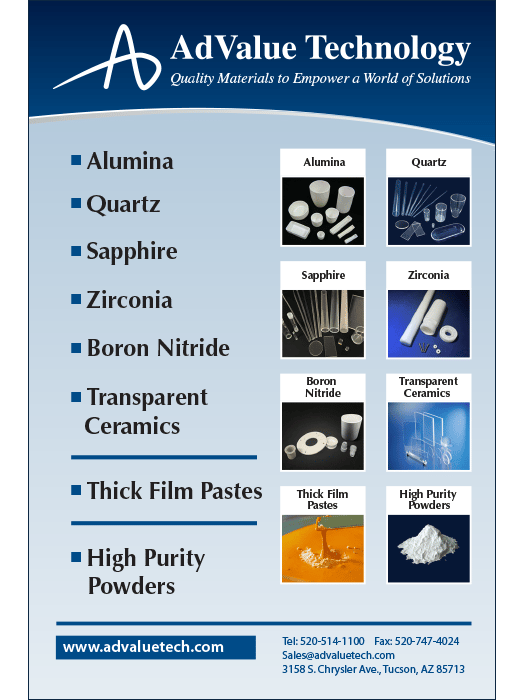
deciphering the discipline
A regular column offering the student perspective of the next generation of ceramic and glass scientists, organized by the ACerS President’s Council of Student Advisors.

Niusha Heshmati
Guest columnist
Sustainable solvent engineering for perovskite solar cells—one step closer to commercialization
The need to reduce carbon emissions has catalyzed intensive research into novel photovoltaic technologies aimed at achieving high power conversion efficiencies (PCEs) at reduced manufacturing costs.
Perovskite solar cells have gained attention as a promising alternative to traditional silicon solar cells. They offer several advantages, including cost-effective fabrication, flexible and light weight panels, and a broader absorption spectrum. These properties allow them to be integrated into the built environment in various ways, including as windows, structural materials, and even clothing!
Perovskite solar cells have achieved impressive results on the laboratory scale, with PCEs of up to 26.1% for single-junction cells and 33.9% for tandem solar cells (TSCs) when combined with crystalline silicon.1 However, challenges such as stability and material toxicity require ongoing research to enable scaling to industrial production and commercial implementation.
The current highest-performing perovskite solar cells rely on the dissolution of precursor materials, namely organic/inorganic cations and metal halides, in toxic solvents. A typical solvent system has a 4:1 vol.% ratio of N,N-dimethylformamide (DMF) to dimethyl sulfoxide (DMSO). DMF serves as the host solvent due to its excellent dissolving capabilities, while DMSO acts as a coordinating solvent owing to its strong coordination properties.
To induce nucleation and crystallization of the precursor materials in the DMF/DMSO solvent system, an antisolvent is added to the solution during the film deposition process. Chlorobenzene (CB), another toxic chemical, is commonly employed as an antisolvent due to its limited solubility with the precursor materials and its compatibility with both DMF and DMSO.
Despite the proven effectiveness of using these chemicals for perovskite film production, handling these chemicals in the quantities required for industrial use raises significant environmental and health concerns. For instance, to create a blade-coated perovskite module capable of producing 1 GW of solar power, it would take about 3,500 liters of solvent.2

Perovskite solar cells could be a key piece in the puzzle to realizing a sustainable energy future if several challenges, such as stability and material toxicity, are addressed.
Credit: Niusha Heshmati
Researchers have explored ecofriendly antisolvents such as ethyl acetate, anisole, and ethanol as replacements for CB. However, there is limited research on developing environmentally friendly primary solvents to replace hazardous DMF.
This scarcity of research is primarily due to the low solubility of perovskite precursors in common green solvents. Issues such as weak intermediate phases and poorly controlled nucleation processes are frequently encountered, which negatively impact the crystalline quality of perovskite thin films.
For optimal results, the ideal solvent should possess polar aprotic qualities with a high donor number, strong coordination abilities, and a low boiling point. Having a firm grasp of solvent parameters associated with polarity can prove to be a highly effective method for predicting whether a liquid can effectively serve as a suitable solvent for a particular solute.
For example, the employment of volatile solvents, such as ethanol or tetrahydrofuran, can reduce the necessary heating temperature for the crystallization process. But it may also result in uncontrolled nucleation and growth. Thus, fine-tuning of the solvent–antisolvent system becomes essential to ensure the successful formation of high-quality perovskite films.3
In my ongoing research, we are working to achieve three key objectives:
- Developing a more stable perovskite composition that allows for film fabrication outside of controlled glovebox conditions.
- Replacing toxic solvents with ecofriendly alternatives to minimize environmental impact.
- Scaling up module production using blade coating techniques.
It is our hope that by 2030, perovskite solar cells will play a vital role in mitigating greenhouse gas emissions.
About the author:
Niusha Heshmati is a third-year Ph.D. candidate in materials and nanochemistry at the University of Cologne, Germany. Her research revolves around the synthesis, characterization, and performance enhancement of lead halide perovskite materials for solar cell applications. She has a profound appreciation for various forms of art, and she plays the violin as a hobby.
